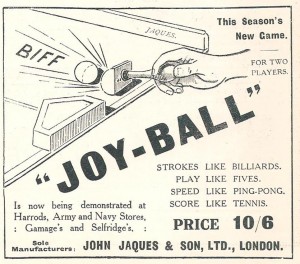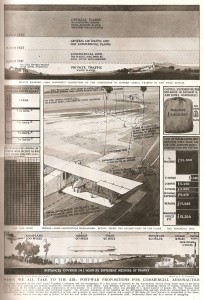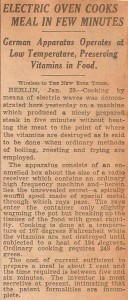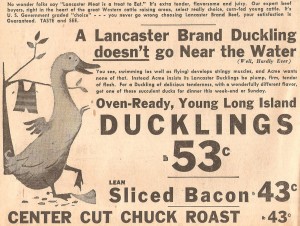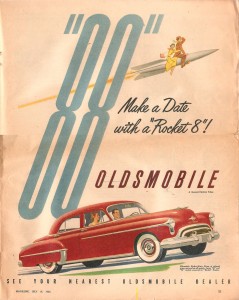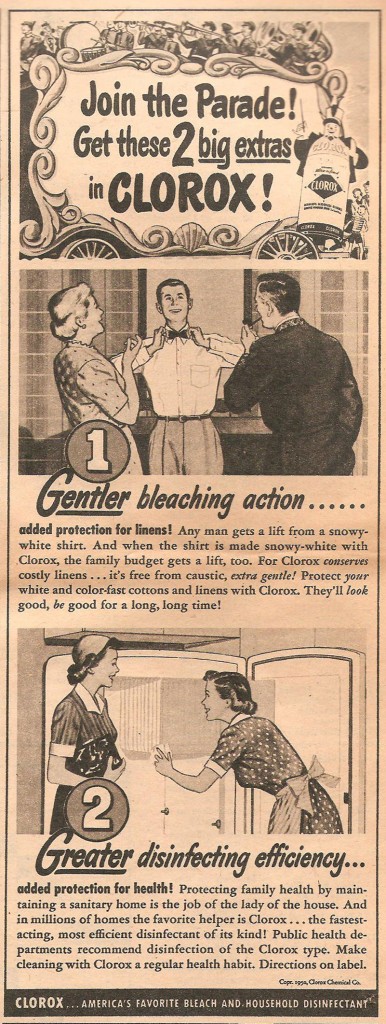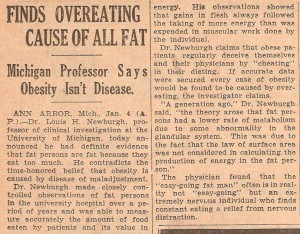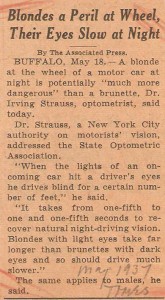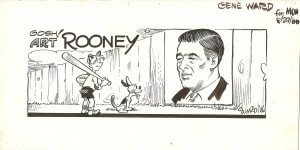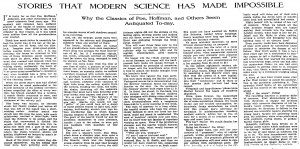Follow Scott
Recent Tweets
- Waiting for Twitter... Once Twitter is ready they will display my Tweets again.
Latest Photos
Search
Tags
anniversary Balticon birthdays Bryan Voltaggio Capclave comics Cons context-free comic book panel conventions DC Comics dreams Eating the Fantastic food garden horror Irene Vartanoff Len Wein Man v. Food Marie Severin Marvel Comics My Father my writing Nebula Awards Next restaurant obituaries old magazines Paris Review Readercon rejection slips San Diego Comic-Con Scarecrow science fiction Science Fiction Age Sharon Moody Stan Lee Stoker Awards StokerCon Superman ukulele Video Why Not Say What Happened Worldcon World Fantasy Convention World Horror Convention zombies
©2025 Scott Edelman
Joy-Ball, anyone?
Posted by: Scott
Tags:
old newspapers
Posted date:
July 18, 2012 |
2 Comments
It’s “This Season’s New Game”—but what is it?
While flipping through my 1914 bound volume of The Graphic—the same newspaper with those intricate aviation infographics and that ad with endorsements from now-forgotten celebrities—I came across an ad in the December 5th issue for a game called Joy-Ball, an ad which gives no indication of how the heck the game is played.
Oh, sure, it sounds like fun, because it promises—
Strokes like billiards.
Play like Fives.
Speed like Ping-Pong.
Score like tennis.
—but what the heck does that mean?
Any of you have ideas for how one would play the game based on the image above?
No amount of Internet searching on “Joy-Ball” or “John Jaques & Son” or “The Graphic” or “1914” or any combination thereof yields an answer, so it all falls to you.
Can any of my UK pals help a Yank out?
Biff!
1917 aviation infographic: “Incidentally, there may be a revival of smuggling”
Posted by: Scott
Tags:
old newspapers
Posted date:
July 5, 2012 |
1 Comment
Earlier this week, I looked through the July issues of various magazines I own from the mid-19th through the early 20th Century in search of something appropriate for a 4th of July post, and came up empty.
I was sure there’d be a suitable essay or cartoon in the July 7th, 1917 issue of The Graphic—after all, there was a war on, so surely there’d be patriotism on display—but no. Oh, the newspaper’s pages were filled with some nice pictures of Woodrow Wilson and the War Cabinet, and a few over-the-top rants against Junkerdom, but nothing beautiful or funny or poetic or uplifting. And so … no July 4th post.
But I did find something intriguing—a large page of charts and graphs published under the collective header, “When We All Take to the Air: Post-War Propositions for Commercial Aeronautics.”
Check below to see Lord Montagu’s ideas for how to divvy up airspace, the estimated annual cost of running a London-Paris air route, and the distances covered in one hour by different methods of transportation of the day.
Note the warning that with the coming age of non-military aviation, “there may be a revival of smuggling.”
Please forgive the imperfection of the scanning. I don’t own a scanner large enough to accommodate the magazine’s 15.75″ x 11.25″ sheets, and so had to create this image out of two scans. I hope you enjoy it anyway!
The first microwave was unveiled in … 1931?
Posted by: Scott
Tags:
old newspapers
Posted date:
December 18, 2011 |
1 Comment
Everything I know about the timeline of the microwave—which isn’t much—I learned from Wikipedia.
Date #1 to keep in mind: “The specific heating effect of a beam of high-power microwaves was discovered accidentally in 1945 … ” (I did know it was an accidental discovery, though not the year.)
Date #2 to note: “The use of high-frequency electric fields for heating dielectric materials had been proposed in 1934 … ”
If that’s the case, then how is it that the following article appeared in the February 1, 1931 issue of the New York Times, reporting that “cooking by means of electric waves was demonstrated here yesterday on a machine which produced a nicely prepared steak in five minutes” and that “the apparatus consists of an enamelled [sic] box about the size of a radio receiver which contains an ordinary high frequency machine”?
Is there something I’m not getting here because I’m scientifically illiterate? Wasn’t what happened in 1931—”cooking by means of electric waves” in “an enamelled box”—a microwave oven?
Educate me, all you big brains out there!
An ad for Acme Supermarkets (where I guess Wile E. Coyote used to buy all his hunting gear) in the February 10, 1955 issue of the Washington, D.C. Evening Star hints that the ducks the company sells are treated like veal.
According to the ad, “swimming (as well as flying) develops stringy muscles, and Acme wants none of that.”
No wonder that bathing suit is hanging on a tree branch. The duck isn’t allowed to wear it.
I suddenly feel very sad for that duck.
I want to make a date with an Olds 88
Posted by: Scott
Tags:
old newspapers
Posted date:
October 6, 2011 |
1 Comment
I think I found my dream car in the July 15, 1950 New York Times Magazine.
After all, as the ad says—it IS Hydra-Matic!
But if I can’t have the car … I at least want that rocket.
The following ad appeared in the July 16, 1950 issue of The New York Times Sunday Magazine. My wife, whose discerning eyes I’d trust more than anyone’s when it comes to the styles of DC artists of the ’50s and ’60s, swears both images are by Jim Mooney.
Mooney, for those not familiar with the name, was best known for drawing Supergirl from 1959-1968, though I also loved him on Dial H for Hero. On top of that, I was lucky enough to have him draw my fill-in issue of Omega the Unknown in 1977.
Give the Clorox ad below a look and let me know wherther your discerning eyes agree.
1930s study proves “fat persons are fat because they eat too much”
Posted by: Scott
Tags:
old newspapers
Posted date:
September 27, 2011 |
No comment
According to this Associated Press article from the mid-’30s, it turns out that “fat persons are fat because they eat too much” and “gains in flesh always followed the taking of more energy than was expended in muscular work by the individual.”
Wow … who knew?
Ain’t science amazing?
Optometrist says blonde drivers “much more dangerous” than brunettes
Posted by: Scott
Tags:
old newspapers
Posted date:
September 15, 2011 |
1 Comment
According to a May 1937 Associated Press article, blonde drivers are “much more dangerous” than brunettes, because:
When the lights of an oncoming car hit a driver’s eyes he drives blind for a certain number of feet. … It takes from one-fifth to one and one-fifth seconds to recover natural night-driving vision. Blondes with light eyes take far longer than brunettes with dark eyes and should drive much slower.
Since this 74-year-old article is the first time I’ve ever heard of this theory, I figure it’s safe to assume it was disproved a long time ago.
You’ll tell me if I’m wrong in that assumption, right?
The day I thought I met Bill Gallo
Posted by: Scott
Tags:
old newspapers
Posted date:
May 14, 2011 |
3 Comments
When the legendary Daily News sports cartoonist Bill Gallo died last week at age 88, I thought that was an opportunity to show you the drawing he gave me when I visited the paper in the early ’70s. Instead, it’s an opportunity show you that my memory’s not quite what I thought it was.
I didn’t have time to dig out my Bill Gallo drawing and scan it the day he died—it’s been a busy week—and when I pulled out my sports cartoon of Art Rooney, owner of the Pittsburgh Steelers, I noticed that—wait a second! It isn’t signed by Bill Gallo! It’s signed by Gene Ward. So I guess I’d remembered that childhood incident wrong.
But who’s Gene Ward?
I figured he must be a second string cartoonist who lived in Bill Gallo’s shadow at the Daily News, but when I started to do research, everything I could find tells me that Ward was a respected sports writer at the paper who, according to his obituary, covered 29 consecutive Kentucky Derbies. But nothing I could uncover showed that he was an artist as well. And yet … there’s his signature.
Which means … what?
That he was a columnist who drew cartoons for his own column? I find that difficult to believe, since someone somewhere online would have surely mentioned that.
That the piece was done by a staff artist at the Daily News who never got credit for his assignment because the writer hogged it all? I find that hard to believe, too, particularly since I’ve seen other art credited to Gene Ward for sale.
That this is really by Bill Gallo after all, as I first thought? The more I look at it, and compare it to other examples of Gallo’s art, the more I think that can’t be true either.
All I’m sure of is … I was handed this artwork at the Daily News by the artist himself … whoever that was.
So … who actually drew this piece? Who did I actually meet as a kid in the early ’70s? Looks like even though I thought I knew … I don’t.
Any ideas?
1911 NY Times article says science has killed mystery and romance
Posted by: Scott
Tags:
old newspapers
Posted date:
April 1, 2011 |
No comment
An unsigned essay in the March 26, 1911 edition of the New York Times bemoans the fact that “mystery and romance have suffered greatly at the hands of modern science and invention,” and that the world therefore no longer has a place for such writers as Edgar Allan Poe, E. T. A. Hoffmann, and Hans Christian Andersen, who supposedly found it much easier to blow our minds in the good old pre-1911 days.
The writer is afraid that without, to use one example, the shadows cast by “heavy, sticky, leaky oil lamps,” and with instead “a savage, tactless, pitilessly even cataract of light”:
“Who will read those tales now to the family seated around the matter-of-fact radiator with its angular gills and its regular, commonplace, good-natured wheeze?”
Luckily, we have somehow gotten by, and still find things that frighten us, even though we’ve advanced quite a bit beyond the science and invention of 100 years ago.
What I found the most interesting in the piece, though, was that the writer complained about the lack of anonymity and the loss of the ability for people to reinvent themselves back then—and he or she wasn’t talking about it being caused by the Internet, but instead by a couple of far simpler technologies.
“What chance has the scion of a royal house to pose as clerk and be loved for himself alone, when commercial agencies supply you very promptly with complete details on the past, present, and ‘prospects’ of any of your acquaintances for a fee ranging from 25 cents to $1? … Telegraph and long-distance phone have blasted forever the hopes of would-be impostors.”
Which tells me that come 2111, when we’ve slid even further along that slippery technology slope, our descendants will look back on quaint 2011 and wonder how you and I didn’t realize how how good we really had it.

